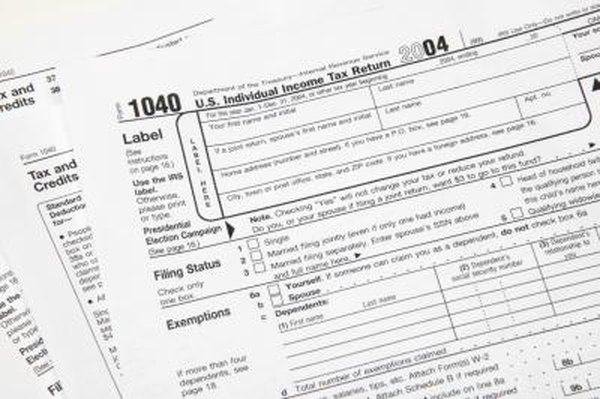How to Determine Your Tax Bracket at Retirement
An educated guess is the best you can do when it comes to figuring your tax bracket at retirement.
Creatas/Creatas/Getty Images
When you're planning for retirement, a major factor affecting your savings decisions involves predicting the tax rate you're going to pay on your retirement income. There's no magic formula to figure out your tax bracket at retirement, especially if you plan to work for another decade or more. However, by looking at your expected retirement income and adding up all the taxable portions, you can get a good feel for the tax rates you'll pay based on today's tax rates.
Retirement Accounts
Pensions and other retirement plans typically comprise a big part of your retirement income. Pensions, traditional 401(k) plans and traditional IRAs are typically tax-deferred plans, meaning that those distributions count as part of your taxable income during retirement. For example, if you expect to withdraw $50,000 per year, that's $50,000 of taxable income that boosts your tax rate. However, Roth accounts, including Roth 401(k)s and Roth IRAs, allow you to take all your money out tax-free, which means the withdrawals won't be part of your taxable income.
Investment Income
Investment income not in retirement accounts is taxed differently than the money that you withdraw from your retirement plans. As of 2013, if you're making money from qualified dividends or long-term capital gains, your income is taxed at a lower tax rate than your ordinary income. Usually, dividends are qualified if you've owned the stock for at least 61 days during the 121-day period starting 60 days before the ex-dividend date. Long-term capital gains refer to profits you make from selling investments you've held for more than one year.
Social Security Income
Social Security benefits can also account for a big part of your post-retirement income, but the tax rules for the income are a bit complicated. Basically, the higher your total income, the higher the portion of your benefits that are taxed. As of 2013, no more than 85 percent of your benefits are taxable, no matter how high your income. The portion of your Social Security benefits that count as taxable income are taxed at your ordinary income tax rate.
Unpredictable Tax Rates
As of 2013, the ordinary income tax rates range from 0 percent to 39.6 percent and the long-term capital gains rates range from 0 percent to 20 percent. Of course, all of this is based on current income ta law, which can change at any time. For example, if Congress decides to raise tax rates, you might find yourself in a higher income tax bracket at retirement, even though you have less taxable income than you do today. Conversely, if tax rates fall, you could be paying less at retirement than you do now. Similarly, if the long-term capital gains rates were raised or eliminated, that would also throw a wrench in your estimations.
References
Writer Bio
Based in the Kansas City area, Mike specializes in personal finance and business topics. He has been writing since 2009 and has been published by "Quicken," "TurboTax," and "The Motley Fool."

